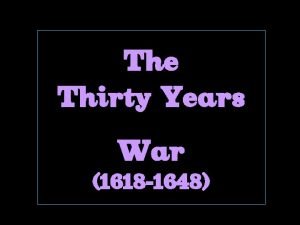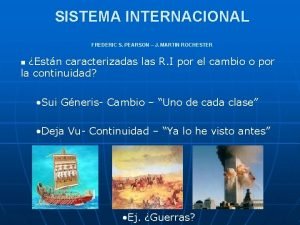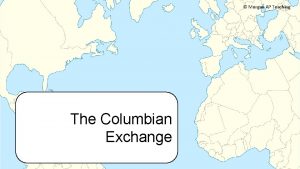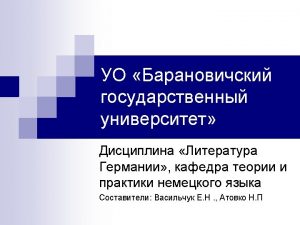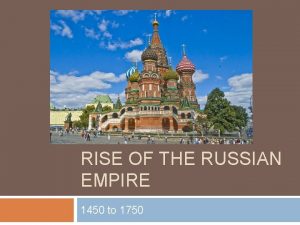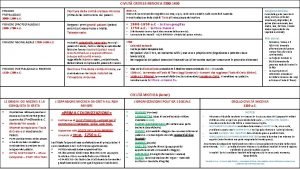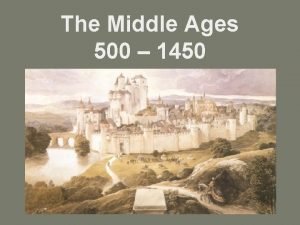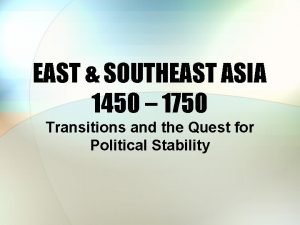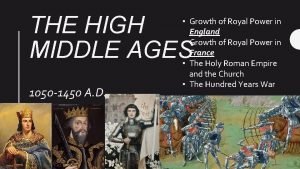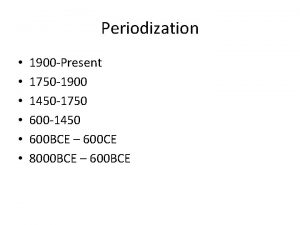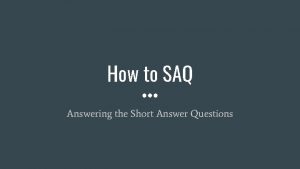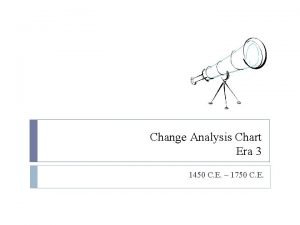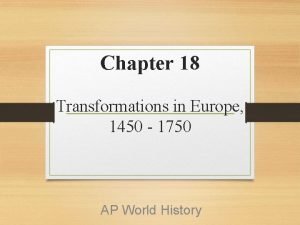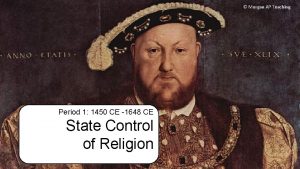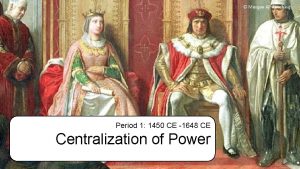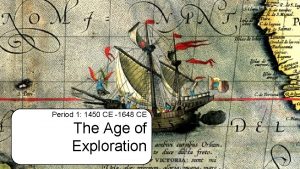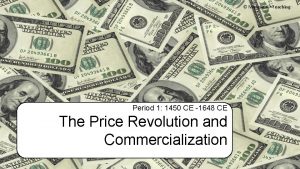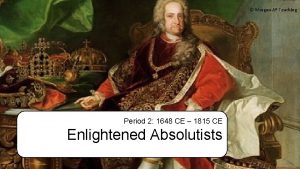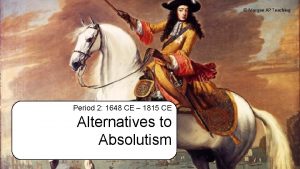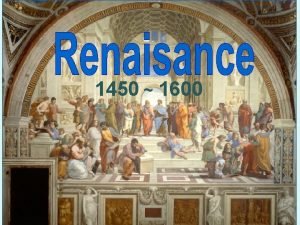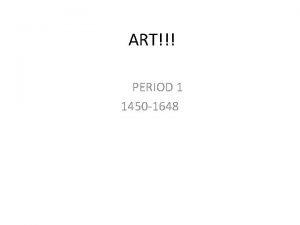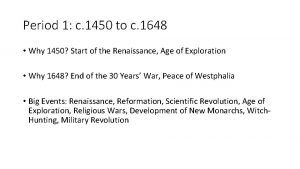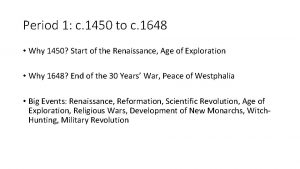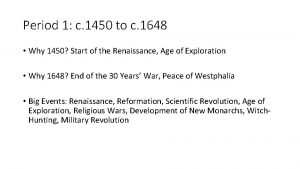Morgan AP Teaching Period 1 1450 CE 1648














- Slides: 14

© Morgan AP Teaching Period 1: 1450 CE -1648 CE Early-Modern Society

© Morgan AP Teaching Public and Social Life • While governments and economies had all begun to change quite drastically, the way people relaxed, celebrated, and spent their free time remained largely the same • Leisure activities were still tied directly the Church and agricultural cycle, and still reflected the persistence of magic and folklore • All Saint’s Day, Christmas, Easter, etc. • Events such as Carnival (social reversal), and religious festivals revolving around harvest dominated popular life • Additionally, large groups formed to watch blood sports (animals fighting): bull-baiting, bearbaiting, etc.

St. Gregor’s Day Festival

Bull Baiting

Bear Baiting

© Morgan AP Teaching City Life • As large amounts of people began urbanizing due to enclosure movements, cities and authorities were largely unprepared to handle the new, massive crowds • While cities offered construction work for men, as food processors and innkeepers, most people were unemployed and extremely poor • Crime and disease ran rampant in cities, and a lack of sanitation made life miserable for citizens • With the Church largely gone or irrelevant in Protestant Europe, cities and governments were forced to enforce stricter laws on begging and prostitution and form secular local authorities • Regardless, following the Enclosure Movement, cities overflowed as craft guilds and merchant elites strained private resources to govern and maintain order

© Morgan AP Teaching Secular Governments • While the Church was largely uninvolved with crimes or punishments, the old medieval punishments were still used by secular authorities • Punishment remained a public spectacle: stocks, branding, whipping, and torture • Secular authorities, mostly in Catholic states, also maintained religious laws and book bans • Many, like Philip II, continued to use the Inquisition to convert or execute ‘heretics’ • Despite this continuation, many Protestant areas began to to ban Carnival as an immoral practice



© Morgan AP Teaching Old Beliefs and Witch Hunts • While the Scientific Revolution had brought new ideas and techniques for solving the world’s mysteries, old beliefs in magic and folk still persisted • People still believed in witchcraft, curses, blessings, potions, magic, and were extremely superstitious • The believed sickness and plague were either curses, hexes, or punishment for bad behavior or sin • In fact, despite a growing scientific community, witch hunts and killings peaked in the late 1500 s and early 1600 s • Lastly, people also still believed actions such as volcanoes or comets in the sky were consequences of bad behavior or omens of bad things to come

© Morgan AP Teaching Livelihood • During the 16 th and 17 th centuries most Europeans obtained livelihood from peasant agriculture, paying rent and taxes to their lords • Most farms at the time relied heavily on manual labor and used the three-crop farming rotation, leaving 1/3 of the soil unused • Unfortunately for peasants, increases in population during the 16 th century meant prices rose higher than wages • This caused peasant families to be poorer and reduced their standards of living

© Morgan AP Teaching Marriage and Literacy • While these economic conditions lowered standards of living, they were raised again by the 16 th century (post-Price Revolution) • Additionally, advances in education and harsh economic pressures delayed marriages, resulting in smaller families • This left fewer people around to use the money supply, and actually raised living standards, especially after the Thirty Years War • While the printing press helped spread literature, the vast majority of Europeans were still uneducated, illiterate peasants • However, the printing press did play a pivotal role in establishing vernacular languages such as English (Shakespeare), German, Italian, and French

© Morgan AP Teaching Families • Much like Paleolithic societies, peasant families worked in an egalitarian manner • While men did more strength-oriented labor, women worked often with the men in agriculture doing separate but complementary tasks • Families worked and lived in units, enjoyed time together & living in small, well-known local communities • The role of women did remain subordinate as the husband had total legal control • Additionally, while women could inherit businesses/land, they could not expand either or train their own employees

Women • While women remained subordinate to men in Early Modern Europe, the Reformations and the Renaissance raised debate about female education known as La Querelle Des Femmes in French • La Querelle Des Femmes was a broad debate from the 1400 s to the 1700 s in Europe regarding the nature of women, their capabilities, and whether they should be permitted to study, write, or govern in the same manner as men • Some women, such as writer Christine de Pizan, women were as intelligent as men were, they were, however, not afforded the same education • Additionally, some Protestants, mostly those deemed ‘radical’, believed women could play a more active role as a pastor or preacher • Protestant women also played a major part in the Reformation by offering funds to Protestant writers and princes who fought to defend Protestantism • Lastly, women had an impact on the arts as well, such as the famous Baroque painter (Artemisia Gentileschi) © Morgan AP Teaching
